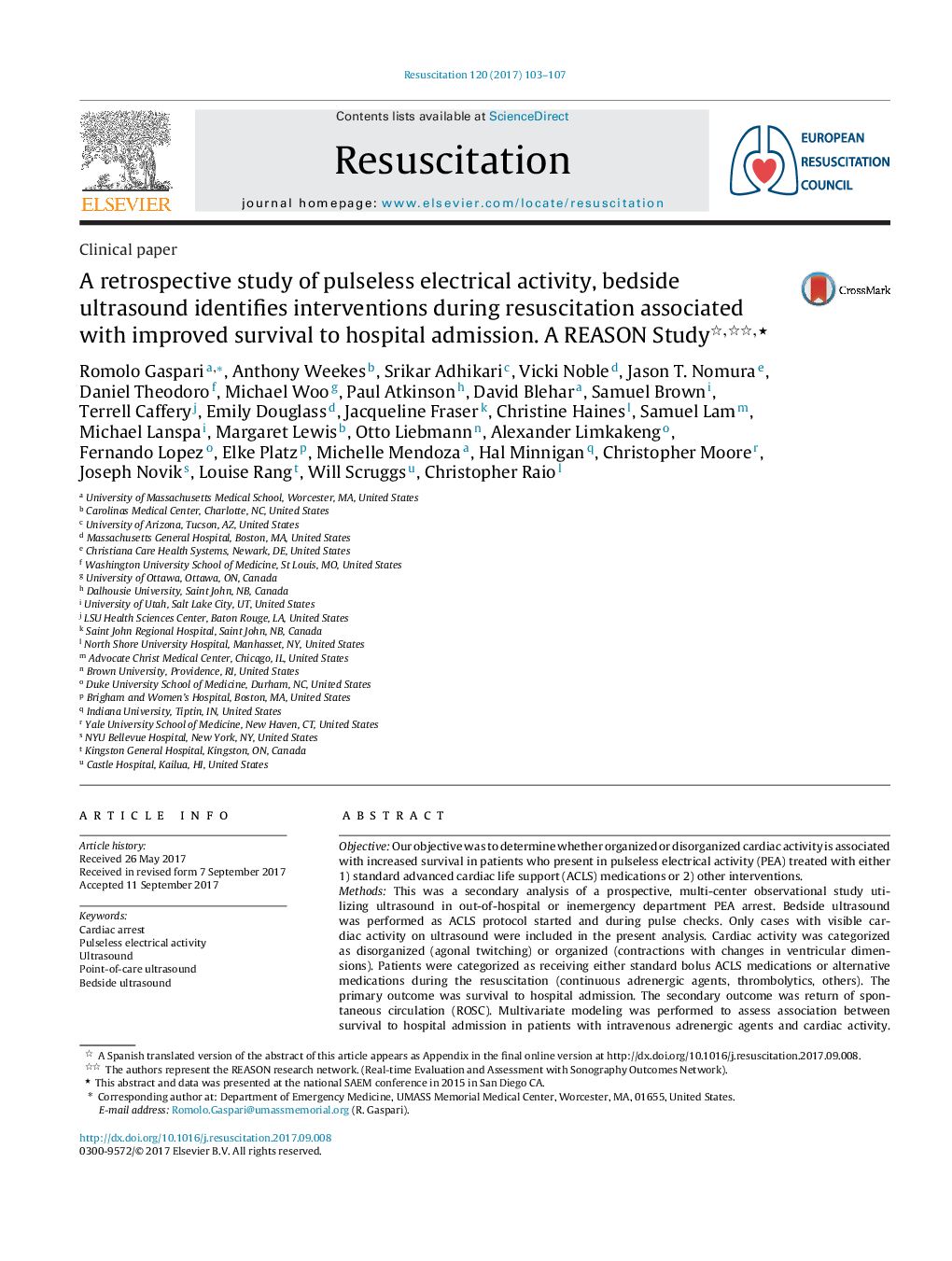| کد مقاله | کد نشریه | سال انتشار | مقاله انگلیسی | نسخه تمام متن |
|---|---|---|---|---|
| 5619805 | 1578964 | 2017 | 5 صفحه PDF | دانلود رایگان |

ObjectiveOur objective was to determine whether organized or disorganized cardiac activity is associated with increased survival in patients who present in pulseless electrical activity (PEA) treated with either 1) standard advanced cardiac life support (ACLS) medications or 2) other interventions.MethodsThis was a secondary analysis of a prospective, multi-center observational study utilizing ultrasound in out-of-hospital or inemergency department PEA arrest. Bedside ultrasound was performed as ACLS protocol started and during pulse checks. Only cases with visible cardiac activity on ultrasound were included in the present analysis. Cardiac activity was categorized as disorganized (agonal twitching) or organized (contractions with changes in ventricular dimensions). Patients were categorized as receiving either standard bolus ACLS medications or alternative medications during the resuscitation (continuous adrenergic agents, thrombolytics, others). The primary outcome was survival to hospital admission. The secondary outcome was return of spontaneous circulation (ROSC). Multivariate modeling was performed to assess association between survival to hospital admission in patients with intravenous adrenergic agents and cardiac activity.ResultsIn our cohort of 225 patients in PEA cardiac arrest with cardiac activity on ultrasound, the overall survival rate was higher in patients with organized cardiac activity than with disorganized cardiac activity. PEA cardiac arrest patients with organized cardiac activity treated with standard ACLS interventions demonstrated improved survival to hospital admission compared to those with disorganized activity (37.7% (95%CI 24.8-50.2%) versus 17.9% (95%CI 10.9-28%). PEA cardiac arrest patients with organized cardiac activity who received continuous adrenergic agents during the resuscitation and prior to ROSC demonstrated higher survival to hospital admission 45.5% (95%CI 26.9-65.4%) and ROSC 90.9% (95%CI 71.0-98.7%) compared to those with disorganized cardiac activity who received continuous adrenergic agents during the resuscitation 0% (95%CI 0-23.0%) and 47.1% (95%CI 26-69%). Regression analysis demonstrates an association between increased survival in patients receiving intravenous adrenergic agents and organized cardiac activity.ConclusionSurvival in patients following PEA arrest is higher in patients with organized cardiac activity. The initiation of continuous adrenergic agents during PEA was associated with improved survival to hospital admission in patients with organized cardiac activity on bedside ultrasound, but this improvement was not seen in patients in PEA with disorganized cardiac activity. Bedside ultrasound may identify a subset of patients that respond differently to ACLS interventions.
Journal: Resuscitation - Volume 120, November 2017, Pages 103-107